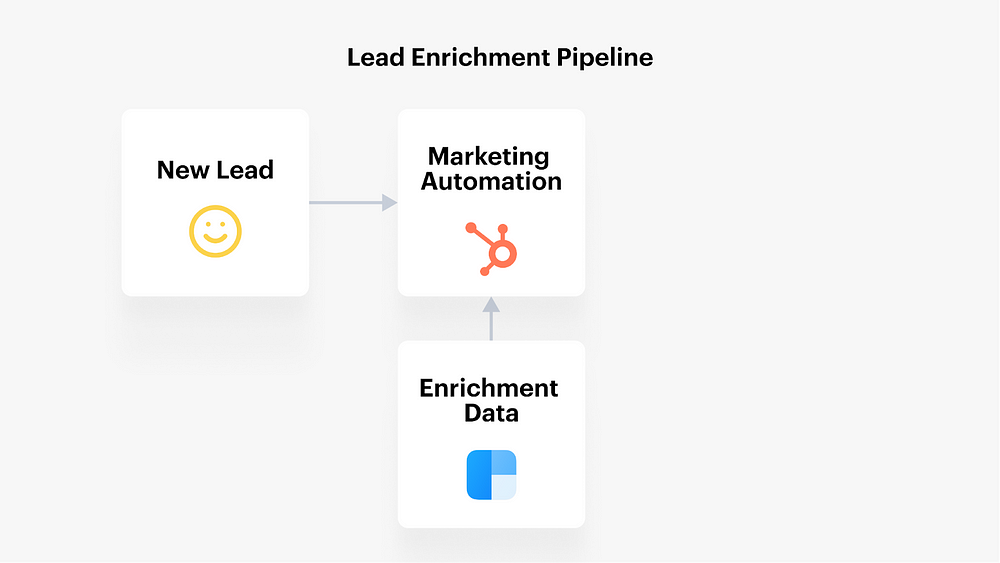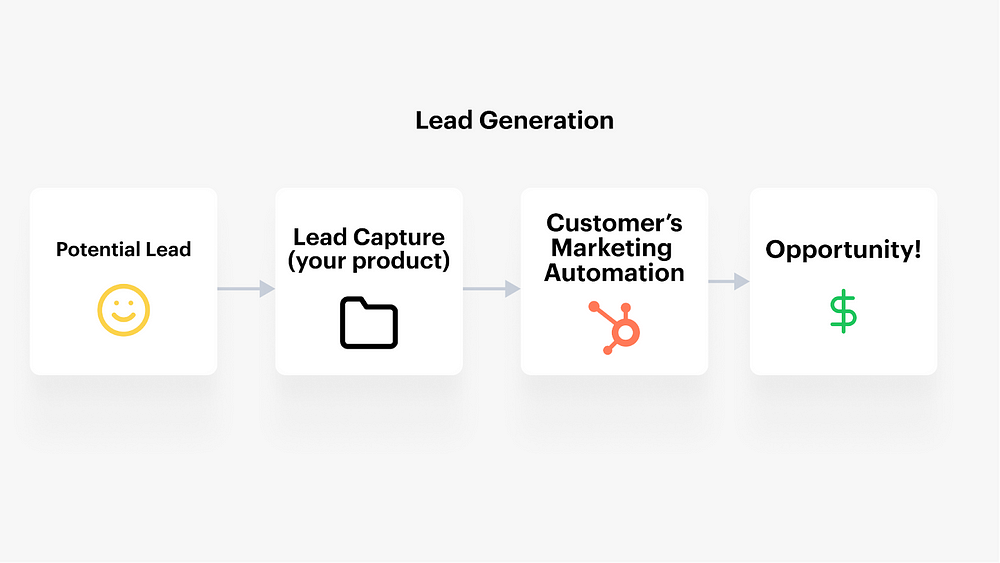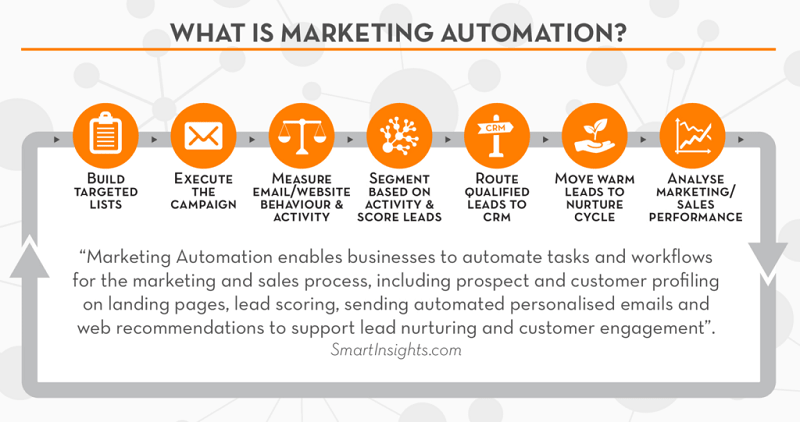Marketing automation integration involves connecting marketing software with other systems to streamline tasks and improve efficiency. It enhances customer targeting and campaign management.

Marketing automation integration is vital for businesses looking to optimize their marketing processes. It connects various marketing tools, CRM systems, and analytics platforms, creating a seamless workflow. This integration allows companies to automate repetitive tasks such as email campaigns, social media posting, and customer segmentation.
By doing so, marketing teams can focus on strategy and creative efforts. Moreover, it ensures consistent messaging across channels, improving customer experience. Accurate data flow between systems enables better analysis and decision-making. Investing in marketing automation integration can significantly boost productivity and ROI for modern businesses.
Introduction To Marketing Automation
Marketing automation is changing business operations. It helps companies grow. This section explains marketing automation. Understand its value in modern business.
What Is Marketing Automation?
Marketing automation uses software to automate marketing tasks. It helps manage campaigns. It includes email marketing, social media posting, and ad campaigns. Automation saves time and effort.
Automated workflows guide potential customers. They nurture leads. This helps convert leads into sales. Marketing automation tools track and analyze customer data. This improves marketing strategies.
Marketing Task Manual Process Automated Process Email Marketing Send emails one by one Bulk email scheduling Social Media Posting Post daily on each platform Pre-schedule posts Ad Campaigns Manual ad placement Automated ad buying
Importance In Modern Business
Marketing automation is crucial for today’s businesses. It increases efficiency and saves costs. Automation allows teams to focus on strategy. This improves productivity.
Customer experience improves with personalized marketing. Automated tools tailor messages. They use customer data to create relevant content. This boosts engagement and loyalty.
- Increased Efficiency
- Cost Savings
- Improved Productivity
- Enhanced Customer Experience
Businesses can scale quickly with marketing automation. Automated systems handle large volumes. They maintain quality and consistency. This supports business growth.

Credit: www.merge.dev
Key Benefits
Marketing automation integration offers many advantages. It streamlines processes and boosts overall performance. Let’s explore the key benefits.
Increased Efficiency
Marketing automation integration saves time. It automates repetitive tasks. These tasks include email campaigns, social media posts, and data entry.
Automation tools handle tasks faster than humans. This speeds up workflows. Teams can focus on strategic planning and creativity.
With automation, error rates drop. Automated systems ensure tasks are done correctly. This reduces the need for rework.
Manual Process Automated Process Manual email scheduling Automated email campaigns Social media posting Scheduled social media posts Data entry Automated data capture
Higher Roi
Marketing automation helps achieve a higher return on investment (ROI). It targets the right audience with personalized messages.
- Segmented email lists
- Personalized content
- Automated follow-ups
These tactics lead to better engagement. Engaged customers are more likely to convert. Higher conversions mean increased revenue.
Automation tools also offer detailed analytics. Marketers can track performance and adjust strategies. This continuous improvement drives better results.
In summary, marketing automation integration provides significant benefits. It enhances efficiency and boosts ROI.
Essential Tools
Marketing automation integration is vital for modern businesses. It streamlines tasks, improves efficiency, and boosts ROI. Knowing the essential tools can make a huge difference. The right tools help you automate and integrate seamlessly. Here’s a guide to the most popular platforms and key features to look for.
Popular Platforms
Several platforms dominate the marketing automation space. These platforms offer robust features and integrations.
- HubSpot: Known for its user-friendly interface and comprehensive tools.
- Marketo: Ideal for lead management and personalized marketing.
- ActiveCampaign: Offers email marketing and CRM functionalities.
- Pardot: Specializes in B2B marketing automation and analytics.
Key Features To Look For
Selecting the right tool involves understanding crucial features. The right features can enhance your marketing strategy.
Feature Description Email Automation Automates email campaigns to save time and effort. CRM Integration Ensures seamless data flow between marketing and sales. Analytics Provides insights to improve your marketing strategy. Lead Scoring Helps prioritize leads based on their engagement level. Social Media Integration Allows for multi-channel marketing efforts.
Choosing a tool with these features will elevate your marketing efforts.
Integration Strategies
Marketing Automation Integration Strategies
Marketing automation integration can boost your marketing efforts. It ensures seamless operations across various platforms. This section will cover effective integration strategies.
CRM Integration
Integrating your CRM with marketing automation tools can streamline processes. This integration helps in managing customer data efficiently. Here are some benefits of CRM integration:
- Centralized customer data
- Personalized marketing campaigns
- Improved lead management
To integrate your CRM, follow these steps:
- Choose a compatible CRM system.
- Connect the CRM to your marketing tool.
- Sync customer data.
- Test the integration.
Social Media Integration
Social media integration enhances your marketing reach. It allows you to manage multiple social platforms from one place. Key benefits include:
- Consistent brand messaging
- Automated social media posts
- Real-time engagement tracking
To integrate social media, use the following strategies:
- Link your social accounts to the marketing tool.
- Set up automated posting schedules.
- Monitor engagement through analytics.
- Adjust strategies based on data insights.
Integration Type Key Benefits CRM Integration Personalized campaigns, Improved lead management Social Media Integration Automated posts, Real-time tracking
Best Practices
Marketing automation integration can transform your business. Following best practices ensures you get the most out of your marketing efforts. This section focuses on two critical areas: segmentation and targeting, and personalization techniques.
Segmentation And Targeting
Proper segmentation and targeting help you reach the right audience. Create distinct customer segments based on various criteria. Here are some effective strategies:
- Demographic Segmentation: Group customers by age, gender, or income.
- Geographic Segmentation: Segment based on location.
- Behavioral Segmentation: Focus on user behavior like purchase history.
- Psychographic Segmentation: Consider lifestyle, values, and interests.
These strategies ensure your messages resonate with each group. Use data analytics tools to refine your segments over time.
Personalization Techniques
Personalization enhances customer experience. Tailor your messages to each individual. Here are some key techniques:
- Dynamic Content: Change content based on user data.
- Email Personalization: Use names and preferences in emails.
- Product Recommendations: Suggest products based on past behavior.
- Personalized Landing Pages: Create landing pages for different segments.
These techniques make customers feel valued. This leads to higher engagement and conversion rates.
Technique Benefit Dynamic Content Increases relevance and engagement Email Personalization Boosts open and click rates Product Recommendations Enhances customer satisfaction Personalized Landing Pages Improves conversion rates
Implement these best practices to maximize your marketing automation efforts. They ensure your messages reach and resonate with your target audience.

Credit: www.merge.dev
Challenges And Solutions
Marketing automation integration can streamline your business processes. But it comes with its own set of challenges. Understanding these challenges and finding solutions can help you achieve seamless integration. Below, we explore common pitfalls and how to overcome integration issues.
Common Pitfalls
Many businesses face common pitfalls during marketing automation integration:
- Lack of Clear Objectives: Not defining clear goals can derail your efforts.
- Data Silos: Disconnected data sources can lead to inaccurate insights.
- Complexity: Overly complex systems can be hard to manage.
- Employee Resistance: Lack of training can cause resistance to new tools.
Overcoming Integration Issues
Here are some solutions to overcome integration issues:
- Set Clear Objectives: Define what you want to achieve with automation.
- Break Down Data Silos: Use integrated platforms to unify your data.
- Simplify Systems: Choose user-friendly tools that are easy to manage.
- Train Employees: Provide training to ensure smooth adoption.
Below is a table summarizing these challenges and solutions:
Challenge Solution Lack of Clear Objectives Set Clear Objectives Data Silos Break Down Data Silos Complexity Simplify Systems Employee Resistance Train Employees
Case Studies
Marketing automation integration helps businesses streamline their operations. It allows them to save time and improve customer engagement. This section focuses on real-world examples. These case studies show successful integrations and the lessons learned.
Successful Examples
Many companies have benefited from marketing automation. Below are a few successful examples.
Company Integration Tool Result Company A HubSpot Increased leads by 30% Company B Marketo Boosted email open rates by 25% Company C Pardot Enhanced customer segmentation
Lessons Learned
Each successful integration teaches valuable lessons. Here are some key insights.
- Company A: Focus on data quality. Clean data improves lead generation.
- Company B: Personalize your emails. Personalized emails increase engagement.
- Company C: Segment your audience. Tailored messages drive better results.
Understanding these lessons helps in better planning. Businesses can avoid common pitfalls and improve their strategies.

Credit: dinarys.com
Future Trends
The landscape of marketing automation is evolving rapidly. New technologies and methods are emerging, shaping the future of marketing. Let’s explore some key future trends that will define marketing automation integration.
Ai And Machine Learning
AI and machine learning are transforming marketing automation. These technologies enable personalized marketing campaigns. AI can analyze customer data more efficiently. Machine learning algorithms predict customer behavior accurately. This leads to better-targeted marketing strategies.
With AI, marketers can create dynamic content. This content adapts to user interactions in real time. Machine learning can optimize email marketing. It identifies the best time to send emails. AI chatbots improve customer service. They provide instant responses to queries.
Omni-channel Marketing
Omni-channel marketing ensures a seamless customer experience. It integrates all marketing channels into one platform. This includes social media, email, SMS, and more. Customers receive consistent messages across all channels. This builds trust and loyalty.
Marketers can track customer interactions on all channels. This data helps in creating personalized campaigns. An integrated approach boosts engagement rates. It also increases conversion rates. Customers enjoy a unified brand experience.
Trend Benefits AI and Machine Learning Personalized campaigns, real-time content adaptation, optimized email marketing Omni-channel Marketing Seamless experience, consistent messaging, higher engagement and conversion rates
These future trends are essential for marketing automation. They offer significant benefits for businesses. Embracing these trends can lead to better marketing outcomes.
Frequently Asked Questions
What Is Marketing Automation Integration?
Marketing automation integration connects your marketing tools and platforms. It streamlines tasks and enhances efficiency. This ensures cohesive and effective marketing strategies.
How Does Marketing Automation Integration Work?
It connects multiple marketing tools and platforms. Data flows seamlessly between them, automating tasks. This improves campaign efficiency and accuracy.
Why Is Marketing Automation Integration Important?
It saves time by automating repetitive tasks. It also improves data accuracy and enhances campaign effectiveness. Integration provides a unified view of marketing efforts.
What Tools Are Needed For Marketing Automation Integration?
Common tools include CRM systems, email marketing platforms, and social media management tools. These tools work together to automate tasks and streamline processes.
Conclusion
Integrating marketing automation can streamline your processes and boost efficiency. It helps you target the right audience effectively. This technology enhances customer engagement, driving better results. Embrace automation to stay ahead in a competitive market. Start integrating today and watch your business grow rapidly.
